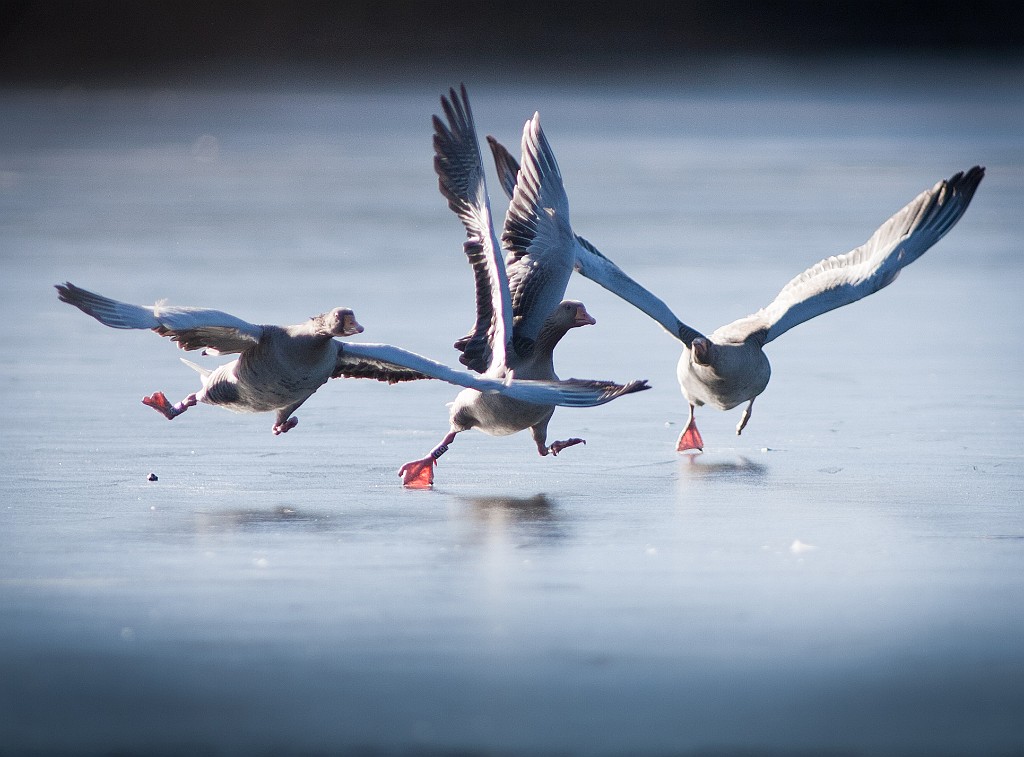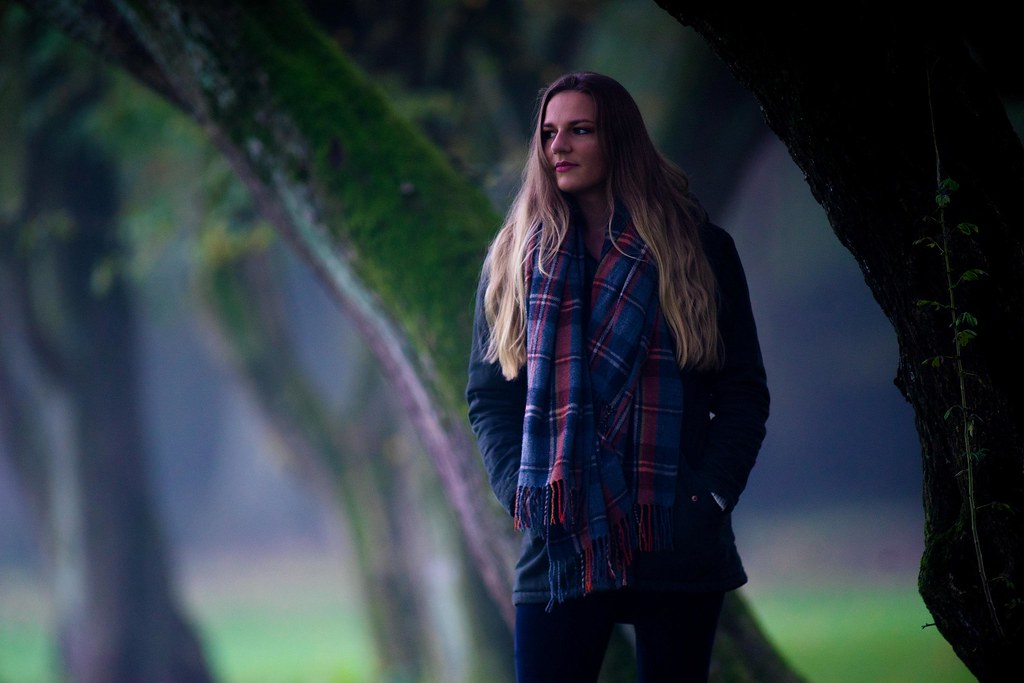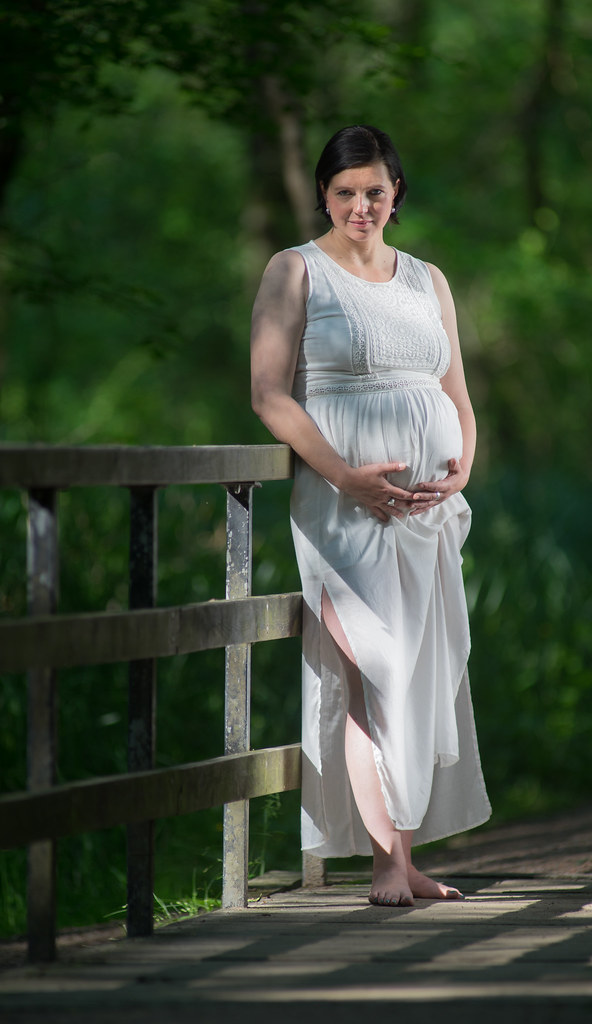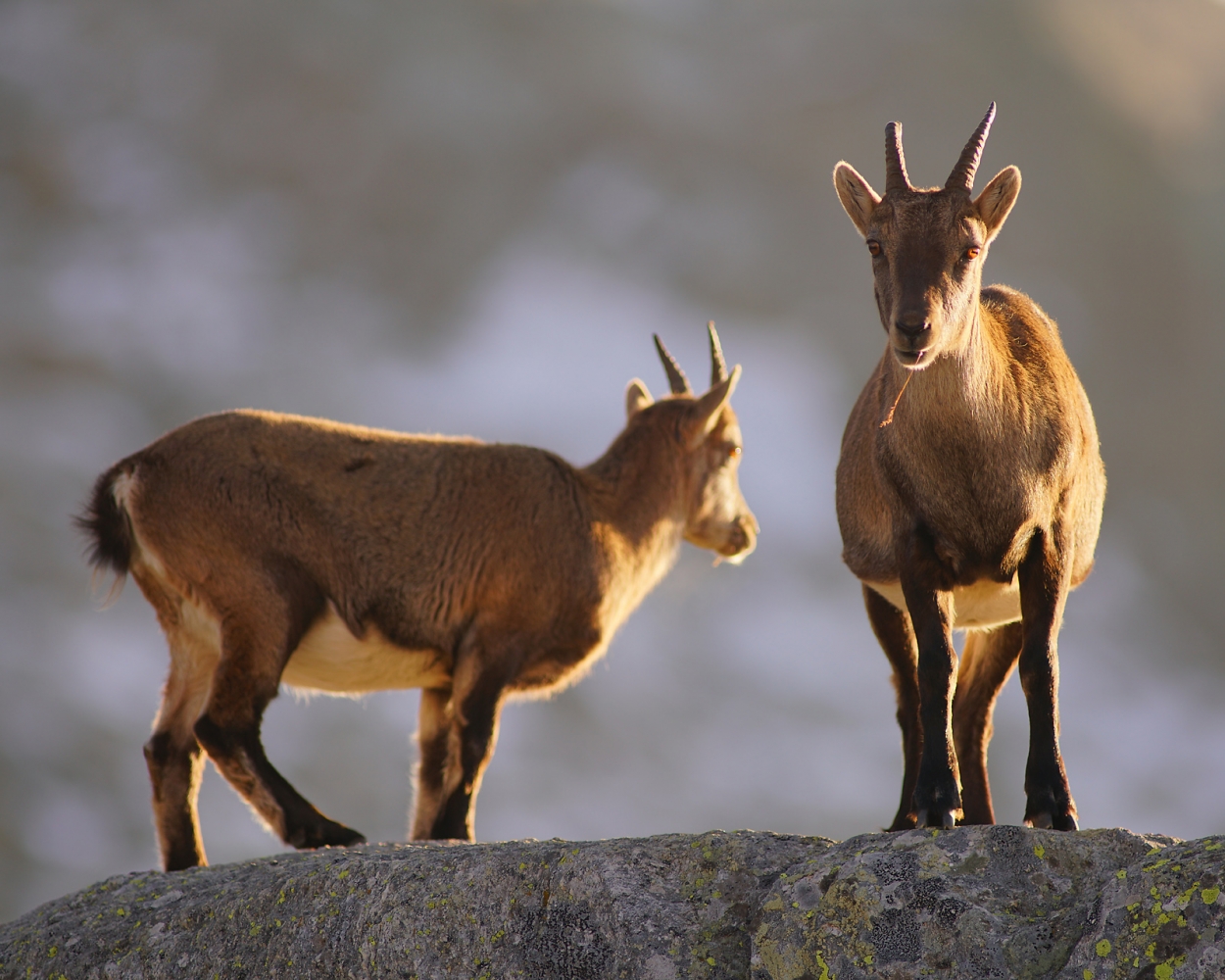| View previous topic :: View next topic |
| Author |
Message |
stevemark

Joined: 29 Apr 2011
Posts: 3754
Location: Switzerland
|
 Posted: Mon Oct 31, 2016 12:47 pm Post subject: Canon nFD 400mm 2.8 L Posted: Mon Oct 31, 2016 12:47 pm Post subject: Canon nFD 400mm 2.8 L |
 |
|
stevemark wrote:
Even though it is a well known lens among Canonians, there's not so much information about the legendary Canon new FD 2.8/400mm L lens to be found in the internet.
Some days ago i had the opportunity to shoot with both the nFD 2.8/300mm and the nFD 2.8/400mm L as well as the FD 2.8/300mm Fluorite. The two nFD lenses are ivory-colored, the latter (older) FD 2.8/300mm Fluorite ist black.
Both 300mm lenses have a large fluorite lens with an extremely low dispersion (Abbe number of 95.1). The older FD lens has a third element from LD glass (Abbe 70.1), the newer nFD lens however uses UD glass (Abbe 81.6) for its third element.
While the FD lens has a small rest of lateral CAs, the newer nFD is simply free of lateral CAs.
The nFD 2.8/400mm is a huge lens (it dwarfs any 2.8/300mm), it's heavy, and its fun, of course!
It uses no fluorite, but two huge UD glass elements (Abbe 81.7). In contrast, both the nFD 4/300mm and 4.5/400mm have two LD elements (Abbe 70.1), while the nFD 4/300mm L has two UD elements (Abbe 81.6), just as the nFD 2.8/400mm.
As we can assume from the details given above, the nFD will be a bit weaker than the FD/nFD 2.8/300mm when it comes to color correction. In fact there's a remaining rest of lateral and longitudinal CAs, and when using IF film, the focus of the 2.8/400mm L must be adjusted: Its IR marking is at the f11 position (Canons nFD 2.8/300mm and 4.5/500mm do not require any focus adjustment when shooting IR!).
The first image shows a few crops from the extreme corner of a 24MP FF camera (JPGs directly out-of-camera).
The second image is the JPG @ f2.8, direcly out-of-cam.
The entire camera plus lens was laying on a sturdy wall; there was no chance of any movement or vibration. I did use the self-timer and electronic first shutter.
Stephan
#1

#2

_________________
www.artaphot.ch |
|
| Back to top |
|
 |
ZoneV

Joined: 09 Nov 2009
Posts: 1633
Location: Germany
Expire: 2011-12-02
|
 Posted: Tue Nov 01, 2016 8:55 am Post subject: Posted: Tue Nov 01, 2016 8:55 am Post subject: |
 |
|
ZoneV wrote:
Wich lens did you use for this test images?
I own the nFD 300 and 400mm both f/2.8 L. My 300mm lens came with bad fungus, which has left traces in the glass.
The 300 is clearly the better color corrected lens. But sometimes I love to use is, cause its 14cm front lens helps for even more object isolation.
And yes, after using the FD 400 the FD 300 fells really small!
_________________
Camera modification, repair and DIY - some links to look through: http://www.4photos.de/camera-diy/index-en.html
I AM A LENS NERD!
Epis, Elmaron, Emerald, Ernostar, Helioplan and Heidosmat.
Epiotar, Kameraobjektiv, Anastigmat, Epis, Meganast, Magnagon, Quinar, Culmigon, Novotrinast, Novflexar, Colorplan, Sekor, Kinon, Talon, Telemegor, Xenon, Xenar, Ultra, Ultra Star. Tessar, Janar, Visionar, Kiptar, Kipronar and Rotelar.
|
|
| Back to top |
|
 |
stevemark

Joined: 29 Apr 2011
Posts: 3754
Location: Switzerland
|
 Posted: Tue Nov 01, 2016 10:43 am Post subject: Posted: Tue Nov 01, 2016 10:43 am Post subject: |
 |
|
stevemark wrote:
| ZoneV wrote: |
Wich lens did you use for this test images?
I own the nFD 300 and 400mm both f/2.8 L. My 300mm lens came with bad fungus, which has left traces in the glass.
The 300 is clearly the better color corrected lens. But sometimes I love to use is, cause its 14cm front lens helps for even more object isolation.
And yes, after using the FD 400 the FD 300 fells really small! |
The test images were, of course, made with the nFD 2.8/400mm (both the FD 2.8/300mm Fluorite as well as the nFD 2.8/300mm L have better CA correction) - as the title of the thread implies.
Stephan
PS maybe you can add here some of your images made with the nFD 2.8/400mm?
_________________
www.artaphot.ch |
|
| Back to top |
|
 |
TrueLoveOne


Joined: 30 Sep 2012
Posts: 1840
Location: Netherlands
Expire: 2013-12-24
|
 Posted: Tue Nov 01, 2016 11:40 am Post subject: Posted: Tue Nov 01, 2016 11:40 am Post subject: |
 |
|
TrueLoveOne wrote:
| ZoneV wrote: |
more object isolation.
|
That is exactly what i would like to see from this lens!
_________________
My Flickr photostream: http://www.flickr.com/photos/chantalrene/
Sony A7, Canon 5D mkII, Minolta 7D + RD3000 and some more.....
Minolta and Konica collector.... slowly selling all the other stuff! |
|
| Back to top |
|
 |
ZoneV

Joined: 09 Nov 2009
Posts: 1633
Location: Germany
Expire: 2011-12-02
|
 Posted: Tue Nov 01, 2016 12:04 pm Post subject: Posted: Tue Nov 01, 2016 12:04 pm Post subject: |
 |
|
ZoneV wrote:
Here an older image:

_________________
Camera modification, repair and DIY - some links to look through: http://www.4photos.de/camera-diy/index-en.html
I AM A LENS NERD!
Epis, Elmaron, Emerald, Ernostar, Helioplan and Heidosmat.
Epiotar, Kameraobjektiv, Anastigmat, Epis, Meganast, Magnagon, Quinar, Culmigon, Novotrinast, Novflexar, Colorplan, Sekor, Kinon, Talon, Telemegor, Xenon, Xenar, Ultra, Ultra Star. Tessar, Janar, Visionar, Kiptar, Kipronar and Rotelar.
|
|
| Back to top |
|
 |
thebbm


Joined: 11 Dec 2013
Posts: 295
Location: France montpellier
|
 Posted: Tue Nov 01, 2016 12:42 pm Post subject: Posted: Tue Nov 01, 2016 12:42 pm Post subject: |
 |
|
thebbm wrote:
i get this lens for bargain (even if it is fungused a little, i need to make it cleaned or sell it )
The lens is very heavy, i use it twice only :
some good shoots :
https://www.flickr.com/photos/114394093@N05/albums/72157668203297701
The last time is use it for animals in nature i only get bad shoots (not sharp) :
#1

#2

#3
 |
|
| Back to top |
|
 |
stevemark

Joined: 29 Apr 2011
Posts: 3754
Location: Switzerland
|
 Posted: Tue Nov 01, 2016 1:44 pm Post subject: Posted: Tue Nov 01, 2016 1:44 pm Post subject: |
 |
|
stevemark wrote:
| TrueLoveOne wrote: |
| ZoneV wrote: |
more object isolation.
|
That is exactly what i would like to see from this lens! |
Such images will follow sooner or later.
_________________
www.artaphot.ch |
|
| Back to top |
|
 |
ZoneV

Joined: 09 Nov 2009
Posts: 1633
Location: Germany
Expire: 2011-12-02
|
 Posted: Thu Nov 03, 2016 6:19 pm Post subject: Posted: Thu Nov 03, 2016 6:19 pm Post subject: |
 |
|
ZoneV wrote:
From last week:
 Outdoor Portrait by Markus, auf Flickr Outdoor Portrait by Markus, auf Flickr
_________________
Camera modification, repair and DIY - some links to look through: http://www.4photos.de/camera-diy/index-en.html
I AM A LENS NERD!
Epis, Elmaron, Emerald, Ernostar, Helioplan and Heidosmat.
Epiotar, Kameraobjektiv, Anastigmat, Epis, Meganast, Magnagon, Quinar, Culmigon, Novotrinast, Novflexar, Colorplan, Sekor, Kinon, Talon, Telemegor, Xenon, Xenar, Ultra, Ultra Star. Tessar, Janar, Visionar, Kiptar, Kipronar and Rotelar.
|
|
| Back to top |
|
 |
TrueLoveOne


Joined: 30 Sep 2012
Posts: 1840
Location: Netherlands
Expire: 2013-12-24
|
 Posted: Thu Nov 03, 2016 8:29 pm Post subject: Posted: Thu Nov 03, 2016 8:29 pm Post subject: |
 |
|
TrueLoveOne wrote:
Nice!! 
_________________
My Flickr photostream: http://www.flickr.com/photos/chantalrene/
Sony A7, Canon 5D mkII, Minolta 7D + RD3000 and some more.....
Minolta and Konica collector.... slowly selling all the other stuff! |
|
| Back to top |
|
 |
ZoneV

Joined: 09 Nov 2009
Posts: 1633
Location: Germany
Expire: 2011-12-02
|
 Posted: Thu Nov 03, 2016 9:41 pm Post subject: Posted: Thu Nov 03, 2016 9:41 pm Post subject: |
 |
|
ZoneV wrote:
Thank you!
The 400mm is big and heavy, but I like what it can protuce. But for some things I prefer the 300mm lens with its better correction.
Here another picture from the 400mm lens. Great lens for such portraits / fashion images with more than the face.
 On the bridge by Markus, auf Flickr On the bridge by Markus, auf Flickr
_________________
Camera modification, repair and DIY - some links to look through: http://www.4photos.de/camera-diy/index-en.html
I AM A LENS NERD!
Epis, Elmaron, Emerald, Ernostar, Helioplan and Heidosmat.
Epiotar, Kameraobjektiv, Anastigmat, Epis, Meganast, Magnagon, Quinar, Culmigon, Novotrinast, Novflexar, Colorplan, Sekor, Kinon, Talon, Telemegor, Xenon, Xenar, Ultra, Ultra Star. Tessar, Janar, Visionar, Kiptar, Kipronar and Rotelar.
|
|
| Back to top |
|
 |
jamaeolus


Joined: 19 Mar 2014
Posts: 2929
Location: Eugene
Expire: 2015-08-20
|
 Posted: Thu Nov 03, 2016 10:50 pm Post subject: Posted: Thu Nov 03, 2016 10:50 pm Post subject: |
 |
|
jamaeolus wrote:
I really, really like that last image.  
_________________
photos are moments frozen in time |
|
| Back to top |
|
 |
stevemark

Joined: 29 Apr 2011
Posts: 3754
Location: Switzerland
|
 Posted: Mon Feb 27, 2017 8:42 pm Post subject: Posted: Mon Feb 27, 2017 8:42 pm Post subject: |
 |
|
stevemark wrote:
Today i made a few test shots with the nFD 2.8/400mm at full aperture.
Image 1: Overwiev, re-sized to 1500x1000 px
Image 2: 100% crop from the border
Image 3: 100% crop from the extreme corner
The images are out-of-cam (no post-processing except cropping and saving)
I'm quite surprised about the quality of the 2.8/400mm L at f2.8; detail resolution doesn't really increase when stopping down, and CAs are lowest at f2.8 (i. e. the lateral CAs increase when stopping down!)
Stephan


_________________
www.artaphot.ch |
|
| Back to top |
|
 |
ZoneV

Joined: 09 Nov 2009
Posts: 1633
Location: Germany
Expire: 2011-12-02
|
 Posted: Tue Feb 28, 2017 12:19 pm Post subject: Posted: Tue Feb 28, 2017 12:19 pm Post subject: |
 |
|
ZoneV wrote:
Canon nFD 400mm f/2.8L on Sony A7II:
 A Walk On The Beach - Winter Edition by Markus, auf Flickr A Walk On The Beach - Winter Edition by Markus, auf Flickr
_________________
Camera modification, repair and DIY - some links to look through: http://www.4photos.de/camera-diy/index-en.html
I AM A LENS NERD!
Epis, Elmaron, Emerald, Ernostar, Helioplan and Heidosmat.
Epiotar, Kameraobjektiv, Anastigmat, Epis, Meganast, Magnagon, Quinar, Culmigon, Novotrinast, Novflexar, Colorplan, Sekor, Kinon, Talon, Telemegor, Xenon, Xenar, Ultra, Ultra Star. Tessar, Janar, Visionar, Kiptar, Kipronar and Rotelar.
|
|
| Back to top |
|
 |
Gerald


Joined: 25 Mar 2014
Posts: 1196
Location: Brazil
|
 Posted: Tue Feb 28, 2017 3:57 pm Post subject: Posted: Tue Feb 28, 2017 3:57 pm Post subject: |
 |
|
Gerald wrote:
| stevemark wrote: |
I'm quite surprised about the quality of the 2.8/400mm L at f2.8; detail resolution doesn't really increase when stopping down, and CAs are lowest at f2.8 (i. e. the lateral CAs increase when stopping down!)
|
This is common with many lenses. The optical designer generally tries to get a good balance of all the residual aberrations for the lens working wide open. As aperture is reduced, all aberrations EXCEPT the lateral CA and distortion decrease rapidly, so the residual lateral CA becomes more visible for, say, F11 or F16. See, for example, how is the behavior of a CZJ Sonnar 180mm F2.8 at the right edge, for aperture F2.8 and F11. Note how the lateral CA is far less apparent for wide open.
CZJ Sonnar 180mm F2.8 wide open (100% crop on a Sony A99):

CZJ Sonnar 180mm F2.8 at F11 (100% crop on a Sony A99):

_________________
If raindrops were perfect lenses, the rainbow did not exist. |
|
| Back to top |
|
 |
ZoneV

Joined: 09 Nov 2009
Posts: 1633
Location: Germany
Expire: 2011-12-02
|
 Posted: Thu Mar 23, 2017 9:00 pm Post subject: Posted: Thu Mar 23, 2017 9:00 pm Post subject: |
 |
|
ZoneV wrote:
Another Canon FD 400mm f/2.8L on Sony A7II picture:
 Maternity by Markus, auf Flickr Maternity by Markus, auf Flickr
_________________
Camera modification, repair and DIY - some links to look through: http://www.4photos.de/camera-diy/index-en.html
I AM A LENS NERD!
Epis, Elmaron, Emerald, Ernostar, Helioplan and Heidosmat.
Epiotar, Kameraobjektiv, Anastigmat, Epis, Meganast, Magnagon, Quinar, Culmigon, Novotrinast, Novflexar, Colorplan, Sekor, Kinon, Talon, Telemegor, Xenon, Xenar, Ultra, Ultra Star. Tessar, Janar, Visionar, Kiptar, Kipronar and Rotelar.
|
|
| Back to top |
|
 |
devinw


Joined: 19 Aug 2016
Posts: 207
Location: Portland, OR
|
 Posted: Fri Mar 24, 2017 3:37 am Post subject: Posted: Fri Mar 24, 2017 3:37 am Post subject: |
 |
|
devinw wrote:
Loving the subject isolation on some of these shots. Fantastic. ZOneV, that black and white one is just great.  
_________________
Camera: Sony a6300
E-Mount: Zeiss/Sony 16-70 f/4, Samyang 12mm f/2
Rokkor: MD PG 50mm f1.4, MD 100mm Macro f3.5, MD 135mm f2.8, MD Zoom 35-70mm f3.5, MD Zoom 75-150 f4
Canon FD: nFD 50mm f1.4, Tokina AT-X 100-300mm f4
My Flickr: https://www.flickr.com/photos/westonde/
|
|
| Back to top |
|
 |
kds315*


Joined: 12 Mar 2008
Posts: 16544
Location: Weinheim, Germany
Expire: 2021-03-09
|
 Posted: Fri Mar 24, 2017 6:36 am Post subject: Posted: Fri Mar 24, 2017 6:36 am Post subject: |
 |
|
kds315* wrote:
Excellent portrait work Markus!!   
_________________
Klaus - Admin
"S'il vient a point, me souviendra" [Thomas Bohier (1460-1523)]
http://www.macrolenses.de for macro and special lens info
http://www.pbase.com/kds315/uv_photos for UV Images and lens/filter info
https://www.flickr.com/photos/kds315/albums my albums using various lenses
http://photographyoftheinvisibleworld.blogspot.com/ my UV BLOG
http://www.travelmeetsfood.com/blog Food + Travel BLOG
https://galeriafotografia.com Architecture + Drone photography
Currently most FAV lens(es):
X80QF f3.2/80mm
Hypergon f11/26mm
ELCAN UV f5.6/52mm
Zeiss UV-Planar f4/60mm
Zeiss UV-Planar f2/62mm
Lomo Уфар-12 f2.5/41mm
Lomo Зуфар-2 f4.0/350mm
Lomo ZIKAR-1A f1.2/100mm
Nikon UV Nikkor f4.5/105mm
Zeiss UV-Sonnar f4.3/105mm
CERCO UV-VIS-NIR f1.8/45mm
CERCO UV-VIS-NIR f4.1/94mm
CERCO UV-VIS-NIR f2.8/100mm
Steinheil Quarzobjektiv f1.8/50mm
Pentax Quartz Takumar f3.5/85mm
Carl Zeiss Jena UV-Objektiv f4/60mm
NYE OPTICAL Lyman-Alpha II f1.1/90mm
NYE OPTICAL Lyman-Alpha I f2.8/200mm
COASTAL OPTICS f4/60mm UV-VIS-IR Apo
COASTAL OPTICS f4.5/105mm UV-Micro-Apo
Pentax Ultra-Achromatic Takumar f4.5/85mm
Pentax Ultra-Achromatic Takumar f5.6/300mm
Rodenstock UV-Rodagon f5.6/60mm + 105mm + 150mm
|
|
| Back to top |
|
 |
stevemark

Joined: 29 Apr 2011
Posts: 3754
Location: Switzerland
|
 Posted: Mon Oct 16, 2017 7:54 am Post subject: Posted: Mon Oct 16, 2017 7:54 am Post subject: |
 |
|
stevemark wrote:
Here are a few images from a recent hike in the Swiss Alps.
Canon nFD 2.8/400mm L plus Sony A7RII and Monopod.
The weight of the lens plus its size and the monopod can be a bit tricky when following the animals in steep territory - Sony A900 plus 2.8/200mm APO is much easier to use ... and safer.




And finally here's a 100% crop from the previous image - it shows the enormous potential of the nFD 2.8/400mm combined with the high res sensor of the A7RII:

The images were taken at a hight between 2600m and 2800m above sea level, in the Gotthard region.
Stephan
_________________
www.artaphot.ch |
|
| Back to top |
|
 |
Oldhand


Joined: 01 Apr 2013
Posts: 6009
Location: Mid North Coast NSW - Australia
|
 Posted: Mon Oct 16, 2017 9:45 am Post subject: Posted: Mon Oct 16, 2017 9:45 am Post subject: |
 |
|
Oldhand wrote:
Well now - that is good.
Well done
T |
|
| Back to top |
|
 |
stevemark

Joined: 29 Apr 2011
Posts: 3754
Location: Switzerland
|
 Posted: Mon Oct 16, 2017 5:29 pm Post subject: Posted: Mon Oct 16, 2017 5:29 pm Post subject: |
 |
|
stevemark wrote:
Oh, i forgot to write ... the images show the Steinbock (Alpine Ibex).
Its poulation, now around 45'000 animals, was down to a mere 100 animals around 1850. Thanks to the first Italian king, Vittorio Emmanuele, the Steinbock was strictly protected, and the number of animals reached 3000 around 1900.
The Steinbock is not an endangered animal any more, but hunting is strictly controlled. Taking images is relatively easy, since the Steinbock is not that shy, and sometimes even quite courious. When trying to find the herds, i usually listen, since the animals make a distinctive sound when walking on loose stones / rocks. Once i hear them, i try to spot the herd. Usually i takes me around one hour to come close to the group, and then fun starts ... it's quite easy to interact with them, and if one shows enough respect, the animals may even decide to walk towards the photographer and have a closer look at him 
Stephan
_________________
www.artaphot.ch |
|
| Back to top |
|
 |
kds315*


Joined: 12 Mar 2008
Posts: 16544
Location: Weinheim, Germany
Expire: 2021-03-09
|
 Posted: Mon Oct 16, 2017 8:38 pm Post subject: Posted: Mon Oct 16, 2017 8:38 pm Post subject: |
 |
|
kds315* wrote:
Nice IBEX shots and quite a nice story Stephan!   
_________________
Klaus - Admin
"S'il vient a point, me souviendra" [Thomas Bohier (1460-1523)]
http://www.macrolenses.de for macro and special lens info
http://www.pbase.com/kds315/uv_photos for UV Images and lens/filter info
https://www.flickr.com/photos/kds315/albums my albums using various lenses
http://photographyoftheinvisibleworld.blogspot.com/ my UV BLOG
http://www.travelmeetsfood.com/blog Food + Travel BLOG
https://galeriafotografia.com Architecture + Drone photography
Currently most FAV lens(es):
X80QF f3.2/80mm
Hypergon f11/26mm
ELCAN UV f5.6/52mm
Zeiss UV-Planar f4/60mm
Zeiss UV-Planar f2/62mm
Lomo Уфар-12 f2.5/41mm
Lomo Зуфар-2 f4.0/350mm
Lomo ZIKAR-1A f1.2/100mm
Nikon UV Nikkor f4.5/105mm
Zeiss UV-Sonnar f4.3/105mm
CERCO UV-VIS-NIR f1.8/45mm
CERCO UV-VIS-NIR f4.1/94mm
CERCO UV-VIS-NIR f2.8/100mm
Steinheil Quarzobjektiv f1.8/50mm
Pentax Quartz Takumar f3.5/85mm
Carl Zeiss Jena UV-Objektiv f4/60mm
NYE OPTICAL Lyman-Alpha II f1.1/90mm
NYE OPTICAL Lyman-Alpha I f2.8/200mm
COASTAL OPTICS f4/60mm UV-VIS-IR Apo
COASTAL OPTICS f4.5/105mm UV-Micro-Apo
Pentax Ultra-Achromatic Takumar f4.5/85mm
Pentax Ultra-Achromatic Takumar f5.6/300mm
Rodenstock UV-Rodagon f5.6/60mm + 105mm + 150mm
|
|
| Back to top |
|
 |
dickb

Joined: 04 Apr 2008
Posts: 821
|
 Posted: Wed Oct 18, 2017 6:37 pm Post subject: Posted: Wed Oct 18, 2017 6:37 pm Post subject: |
 |
|
dickb wrote:
| stevemark wrote: |
(snip) the animals may even decide to walk towards the photographer and have a closer look at him  |
No doubt they were admiring your stamina for hiking in the mountains with the 400/2.8 - I would. I took mine out yesterday on a short trip in a dutch and therefore completely flat nature reserve, hunting for a juvenile whitetailed eagle. The lens and its matching tripod made quite an impression on my shoulders.. |
|
| Back to top |
|
 |
stevemark

Joined: 29 Apr 2011
Posts: 3754
Location: Switzerland
|
 Posted: Fri Nov 10, 2017 9:23 pm Post subject: Posted: Fri Nov 10, 2017 9:23 pm Post subject: |
 |
|
stevemark wrote:
| dickb wrote: |
| stevemark wrote: |
(snip) the animals may even decide to walk towards the photographer and have a closer look at him  |
No doubt they were admiring your stamina for hiking in the mountains with the 400/2.8 - I would. I took mine out yesterday on a short trip in a dutch and therefore completely flat nature reserve, hunting for a juvenile whitetailed eagle. The lens and its matching tripod made quite an impression on my shoulders.. |
I feel quite at home in the mountains, especially between 2500m - 3500m in the alps. Carrying the weight is not so much a problem, but handling the lens on a monopod in steep (and possibly slippery) territory feels a bit tricky. Certainly not as safe as my A900 plus 2.8/200mm.
In addition the optical viewfinder of the A900 is much better to get into contact with these animals. Observing them throught the Sony A900 optical viewfinder using a decent tele lens is an absolute joy; looking for hours through the (dark!) EVF of the A7RII is exhausting. And having exhausted eyes doesn't contribute to safety either...
Stephan
_________________
www.artaphot.ch |
|
| Back to top |
|
 |
dickb

Joined: 04 Apr 2008
Posts: 821
|
 Posted: Sat Nov 11, 2017 8:01 pm Post subject: Posted: Sat Nov 11, 2017 8:01 pm Post subject: |
 |
|
dickb wrote:

I was on crane safari last weekend and I had a few opportunities to use my 400/2.8, with a Sony NEX 5n this time. These are seriously shy birds, so some reach is useful. The FD extender 1.4x A is a good option, the Vivitar 2x macro focussing teleconverter acceptable, those two combined is pushing it a bit far (ISO 800 doesn't help either):
 |
|
| Back to top |
|
 |
stevemark

Joined: 29 Apr 2011
Posts: 3754
Location: Switzerland
|
 Posted: Sat Nov 11, 2017 9:38 pm Post subject: Posted: Sat Nov 11, 2017 9:38 pm Post subject: |
 |
|
stevemark wrote:
| dickb wrote: |
I was on crane safari last weekend and I had a few opportunities to use my 400/2.8, with a Sony NEX 5n this time. These are seriously shy birds, so some reach is useful. The FD extender 1.4x A is a good option, the Vivitar 2x macro focussing teleconverter acceptable, those two combined is pushing it a bit far (ISO 800 doesn't help either)
|
If reach is needed, the Canon FD converters are a valid option. I have tested the nFD 2.8/400mm with the Canon FD 1.4x, 2x-A and 2x-B converters. Surprisingly, the "long" 2x-A isn't any better than the "short" 2x-B converter. Combinations of FD 1.4x and 2x converters are possible, and one should use them if neccessary (the results are visibly better than simple cropping).
Stephan
_________________
www.artaphot.ch |
|
| Back to top |
|
 |
|
|
